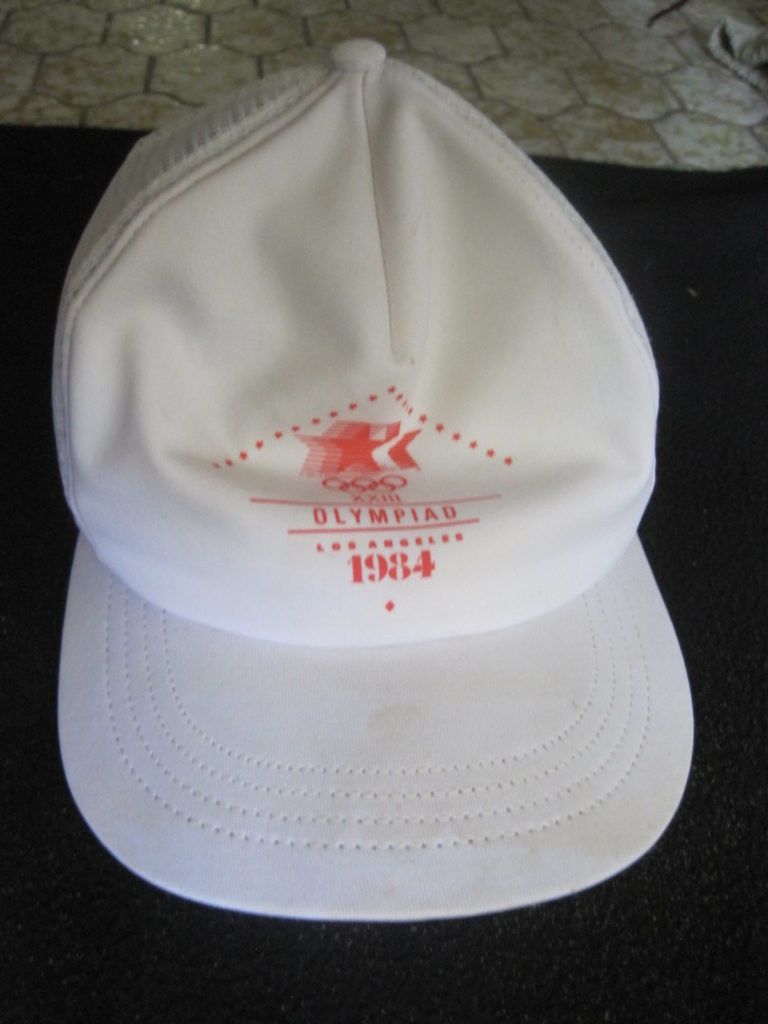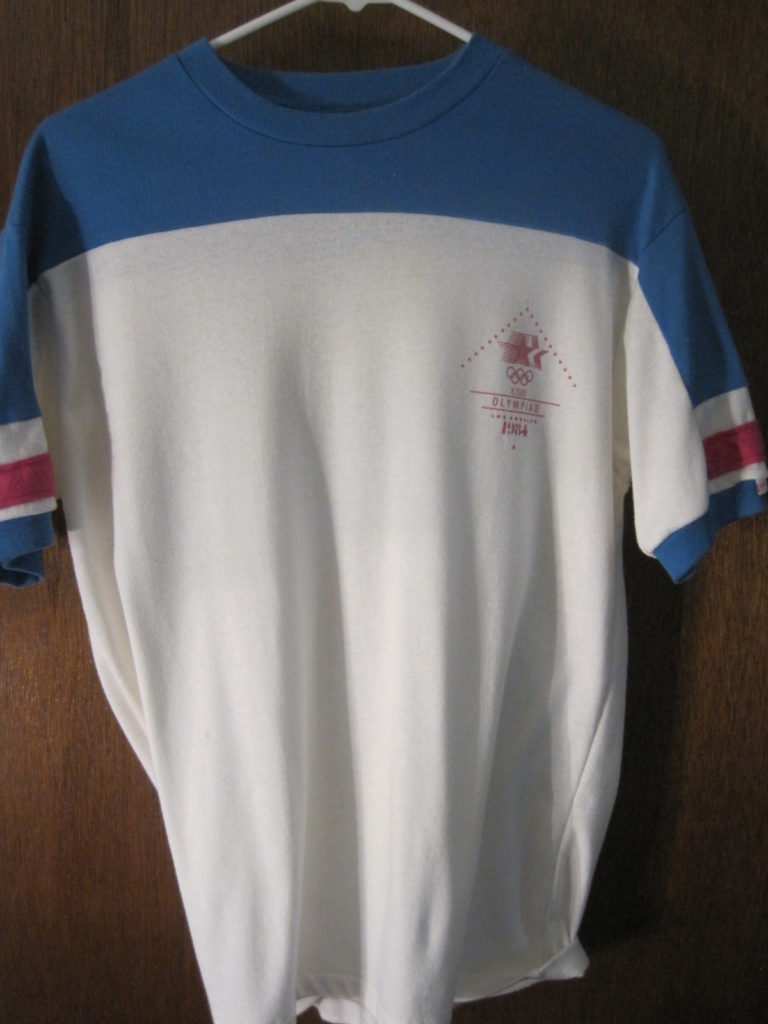When we reconvened one of the topics was — security. There were no, repeat no, anticipated security problems. None. The possibility was very remote. However, even though there will be security people, and one of the three radio nets will be reserved for security, they wanted race marshals who will be alert, intelligent, and capable of independent action. For one thing, the supervisor-to-worker ratio on the course will be about 1 to 150. For another, the radio net could break down. They just wanted to be prepared for anything.
Next came the uniforms. When we left tonight, we would be given cards authorizing us to get T-shirts and hats on the morning of the first race. But we would have to provide the pants. DON’T FORG ET YOUR PANTS! No shorts — only white pants or blue jeans would do.
ET YOUR PANTS! No shorts — only white pants or blue jeans would do.
What about the course itself? It was designed to be representative of Los Angeles. Movie stars? First the runners would move toward the Brentwood area where some of the Beautiful People live. The Beach? Then the course heads to Santa Monica and the beach. Then to the marina — Marina del Rey. And of course a section of freeway. Finally, further inland through the streets of West LA and on to the Coliseum. The course would be marked in kilometers, and would stretch the rules to provide a variety of aid stations and water sprays for the athletes. There would be several types of markings — signs for kilometers and aid stations, cones to mark the running path, barricades for vehicle and crowd control, and nylon rope for crowd control between intersections. Don’t let anyone steal the signs — they’ll be needed for two races. Barricade positions will be painted on the street in orange. A set-up crew will go around before the race to erect the barricades. But manpower will be tight, so if you see two guys with a truckload of barricades, please help. Our responsibility will be the rope. Fifty miles of rope will be uncoiled from a truck-mounted spool. Bring a pocketknife. Nothing with an open blade — security will go bananas. But we will need something to cut the rope into a section for our area. Tie it to anything — barricades, parking meters, trees, anything to serve as a boundary for spectators. After the race, roll your section of the rope up and take it home with you, then bring it back for the second marathon. What if someone doesn’t show up? Prior to the second race, a truck with extra supplies will tour the course. Just jump in front of it and yell “Hey, I need some rope” and they will throw you some.
I stole a glance at the list of items we’re supposed to bring — pocketknife, water, snacks, sunscreen, pen, paper, and portable radio to follow the race. I don’t know where we’ll put all this stuff while w e’re watching the spectators.
e’re watching the spectators.
The or iginal plan was to recruit marshals from the residences along the course. Then everyone could walk to their areas. That was obviously no longer practical. Now there were three assembly points where we would report to our mile chief, draw our uniforms, and board buses for transportation to our stations. Bus passes would be sent by mail. Marshals for miles one through eight would assemble in the RAND Corporation’s parking lot in Santa Monica at 5:30 am on August 5th for the women’s marathon (there was a loud groan), and 3:00 pm on August 12th for the men’s marathon.
iginal plan was to recruit marshals from the residences along the course. Then everyone could walk to their areas. That was obviously no longer practical. Now there were three assembly points where we would report to our mile chief, draw our uniforms, and board buses for transportation to our stations. Bus passes would be sent by mail. Marshals for miles one through eight would assemble in the RAND Corporation’s parking lot in Santa Monica at 5:30 am on August 5th for the women’s marathon (there was a loud groan), and 3:00 pm on August 12th for the men’s marathon.
A few final notes — notices had been sent to all residents within a three-block area of the course that read something like “Your streets will be closed on the following dates for the Olympic Marathons. By the way, why don’t you come and watch?” Also, what will be done for us? Don’t worry, we will have our own portapotties! There won’t be many; most of the portable toilets in California are already spoken for, but there should be one for us every mile or so.
Final instructions were now given. Any volunteers for the racewalks go to one corner, anyone wanting to work in the LAOOC offices in their spare time come to the podium. A list of running clubs who had been promised certain miles was read; they would meet at various points in the room. As for the rest of us — there was a row of card tables at the far end of the room, each with a hand-lettered number (1 through 26) on the wall above. We could now turn in our preference sheets at the mile of our choice. “Oh, and if you have a problem or are not in our system, go to the table in the far corner.” Since I hadn’t turned in an application, that was me.
I hurried to the corner table, presented my sheet, flashed a big smile, and said “Hi, I’m not in your system.” The young man smiled back, took my name and address, then sent me to the row of tables. I noticed I wasn’t the only one. There must have been 30 people in line behind me.
My friend Ken was right. The volunteer at the Mile One table welcomed me with open arms. He gave me a map of the assembly point and sent me happily on my way.
On the way out, I heard one of the officials talking to a volunteer. “The problem is we have no idea how many spectators might show up. We have the attendance estimates from the 1932 games, but we don’t believe them because they show that 80 percent of the population of Los Angeles watched the race. ” He shook his head.
This was going to be interesting.
Next: The women’s marathon.
